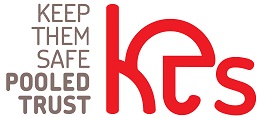This article is not intended to provide you with legal advice. Should you seek legal advice, please consult an attorney. KTS would gladly recommend an attorney should you need one. It’s important to have an attorney take appropriate actions on your behalf and to avoid issues that may be discussed in this article.
This article has been updated on 3/28/2023 to reflect the latest changes in Medicaid income limits for Community Medicaid.
There are two types of New York Medicaid programs that are available to State residents who require additional medical and non-medical care. In April 2020, the New York State 2020-2021 State Budget that was passed has resulted in changes that will affect New York State residents’ eligibility for Community Medicaid. In order to qualify, an understanding of these changes and their new eligibility requirements is essential.
What is Community Medicaid in New York State?
To put it simply, Community Medicaid is standard health insurance that allows recipients to remain in their communities. Community Medicaid eligibility in NY means providing assistance to seniors who wish to age in place but who require some level of care in order to do so.
This program serves as an alternative to Institutional or Nursing Home Medicaid which provides benefits to residents who need to enter long-term care or skilled nursing facilities. It allows senior citizens to stay in their homes while receiving additional care.
Community Medicaid recipients usually require basic assistance with activities of daily living (ADLs) such as eating, dressing, toileting, bathing, and transferring. Community Medicaid is also available to eligible recipients who are living in Assisted-Living facilities.
What benefits does Community Medicaid provide?
The NYS Department of Health lists the following Community Medicaid benefits and services:
- Doctor and clinic services, lab tests, and x-rays
- Medicaid drug coverage for prescription and non-prescription drugs
- Home care and personal care aides
- Adult daycare and transportation to medical care
- Physical, occupational, and speech therapy
- Mental health services
- Durable medical equipment, orthotic and prosthetic appliances
- Light housekeeping
Patients who continue to live at home, as well as residents in assisted-living facilities, may be eligible for these services through Community Medicaid.
What are the eligibility requirements for Community Medicaid in New York?
Since Community Medicaid is a means-tested program, there are specific requirements that must be met in order to qualify for benefits. Firstly, an individual must be aged 65 or older or disabled. There must also be an established need for services. Prior to 2021, an applicant needed to show that they need assistance with at least two activities of daily living (ADLs).
As of July 1, 2021, applicants must show a need for assistance with a minimum of three ADLs. If the individual has an Alzheimer’s or dementia diagnosis, the applicant needs to show they need help with more than one ADL. These ADLs include:
- Bathing
- Personal hygiene
- Dressing (upper body/lower body)
- Walking/locomotion
- Transfer to toilet
- Toilet use/incontinence care
- Bed mobility – turn and position
- Eating
There are also personal care tasks that may be factored in when determining eligibility. Examples of Level II personal care tasks include:
- Administration of medications
- Preparation of meals with modified diets
- Providing routine skincare
- Changing of simple dressings
Also, recipients need to be financially eligible. In order to determine someone’s eligibility, there is an assessment of the applicant’s income as well as assets. The state will review two categories within the applicant’s financials including their income and applicable resources.
In this case, income is considered as any monies generated regardless of the source. This income can include Social Security, wages, pensions, alimony, IRA in distribution, or gifts.
Resources are defined as assets including savings, stocks and bonds, real estate, and IRAs that are not in distribution. Some assets are considered exempt and don’t affect eligibility including IRAs and 401Ks in payout status and irrevocable prepaid burial funds.
The individual’s primary residence is also considered an exempt resource. However, the individual, a spouse, a minor child, or a disabled child must be living in the house. If none of these circumstances apply, in order for the applicant’s home to be considered an exempt resource, the equity in their home must be less than $893,000.
What are the income limits for Community Medicaid in New York?
The limits in the two paragraphs following have been updated on 3/28/2023 to reflect current amounts.
Income limits for Community Medicaid do exist in New York. Currently these limits are $1,677.00 monthly per each individual and for couples the limit is $2,268.00. The disabled, elderly, and/or blind applicants will be entitled to what is called a “disregard” of $20 on any unearned income.
This disregard means it will not be considered or budgeted. When taking this $20 disregard into account, individual income limits are $1,697.00 per month and the couples limit is at $2,288.00 per month. Resource limits are also in place. These limits are $40,820.00 for couples and for individuals is $30,180.00.
What will happen if my income or my assets exceed the allowable limits?
Qualifying in spite of excess income limits is possible. In fact, there is more than one way you can qualify even though you may have income and/or resources that exceed the Medicaid limits. Here are a few ways that may help you to still qualify.
- Health insurance premiums
- Pay-in and spend-down
- Earned income
- Pooled income trust
- Holocaust Restitution Payments
- Spousal Impoverishment Allowance
What is the “look back” period?
Before October 1, 2020, there was no lookback for Community Medicaid. However, due to the passage of the 2020-2021 state budget, a 30 month lookback period will eventually be required. The effective date for the lookback period has been postponed many times due to the Families First Coronavirus Act which forbids states from restricting eligibility for Medicaid benefits during the pandemic.
Upon implementation of the lookback, assets that are transferred since Oct. 1, 2020, will in fact, be subject to the lookback. If the lookback starts May 1, 2022, the lookback period will be 15 months.
The lookback period will increase on a monthly basis until it is 30 months in April 2023. As of now, the lookback will go into effect for Community Medicaid applications that are received beginning January 1, 2022. However, this date has changed multiple times and may be pushed back again.
How did the New York State 2020-2021 Budget change Community Medicaid?
The budgetary changes that have been implemented have the potential to severely disrupt the lives of senior citizens and disabled people living in New York State. For those who wish to age in place and remain in their homes and communities while protecting their assets, careful planning will now be required.
In summary, Community Medicaid is an invaluable program for senior citizens and disabled people who require assistance with activities of daily living but who don’t require the level of care that a skilled nursing facility provides.
About the author, Carlos Nath:
Carlos Nath is the Senior Trust Advisor with KTS Pooled Trust. As a seasoned professional with over four years of experience in the New York pooled trust space, Carlos has helped thousands to enroll and set up their accounts with KTS. He is proficient in understanding the Medicare process and provides assistance in clarifying what clients may need. Previously, Carlos worked with a Medicaid consulting firm as an advisor who helped clients who were seeking Medicaid assistance.




